If you are thinking of visiting La Alpujarra, in Granada, you may have heard about Soportújar (the town of the witches), as well as other popular villages such as Lanjarón or Pampaneira. Nevertheless, Alpujarra has hidden gems that worth the visit.
These are some places in Granada Alpujarra that they are lesser known, but they are pretty fascinating, so you can add them to your route around this part of Granada.
Fondales
Apart from the most famous villages in Alpujarra, there are some more that are beautiful and they keep their authenticity. One of them is Fondales.
We didn’t find this village in any guide, we basically found it browsing on Google Maps. We didn’t know anything about it, so we went to explore it.
Fondales was a great surprise. It is a small village with just 50 inhabitants, located in Poqueira gorge (barranco de Poqueira), just 8.6 km from Pampaneira. You have to park the car right in the entrance, as their streets are very narrow and winding.
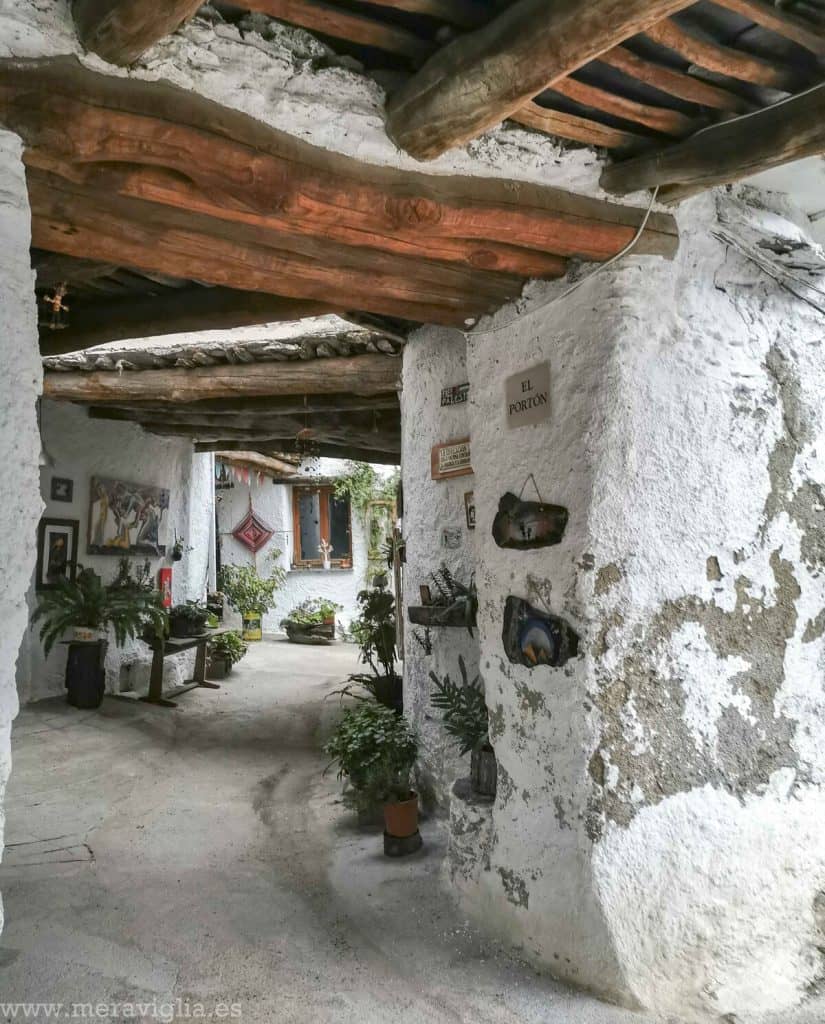
We found Fondales a really authentic village in Alpujarra, that keeps the essence of this part of Andalusia, and a very calm place (we were the only ones visiting it). The traditional houses, the natural surrounding and its calmness made it become one of our favourite places in Alpujarra.
Fuente Agria, Pórtugos
Not from all fountains springs fresh and clear water. In the outskirts of Pórtugos you can drink from Fuente Agria (Sour Fountain in English). Its name states how is the flavour of this water. That is because this is a spring of carbonated water containing iron. That’s why is some kind of ferrous-flavoured spring water.
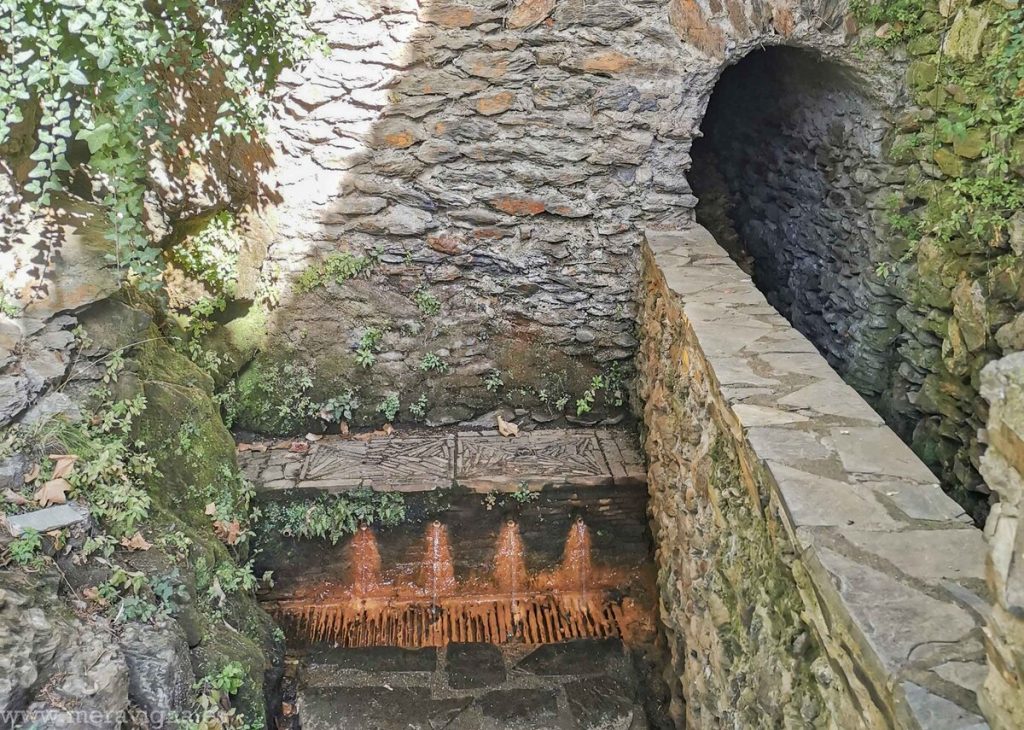
Even though is flavour isn’t so appetizing, it is said that it has mineral-medicinal properties, so some people fill bottles for its home. This fountain is near Virgen de las Angustias Chapel, from the 18th century.
Apart from the fountain, I recommend you to cross the road and go down the stairs. Soon you’ll arrive to El Chorrerón, a small waterfall from the same spring that, due to the iron, has a characteristic orange colour.
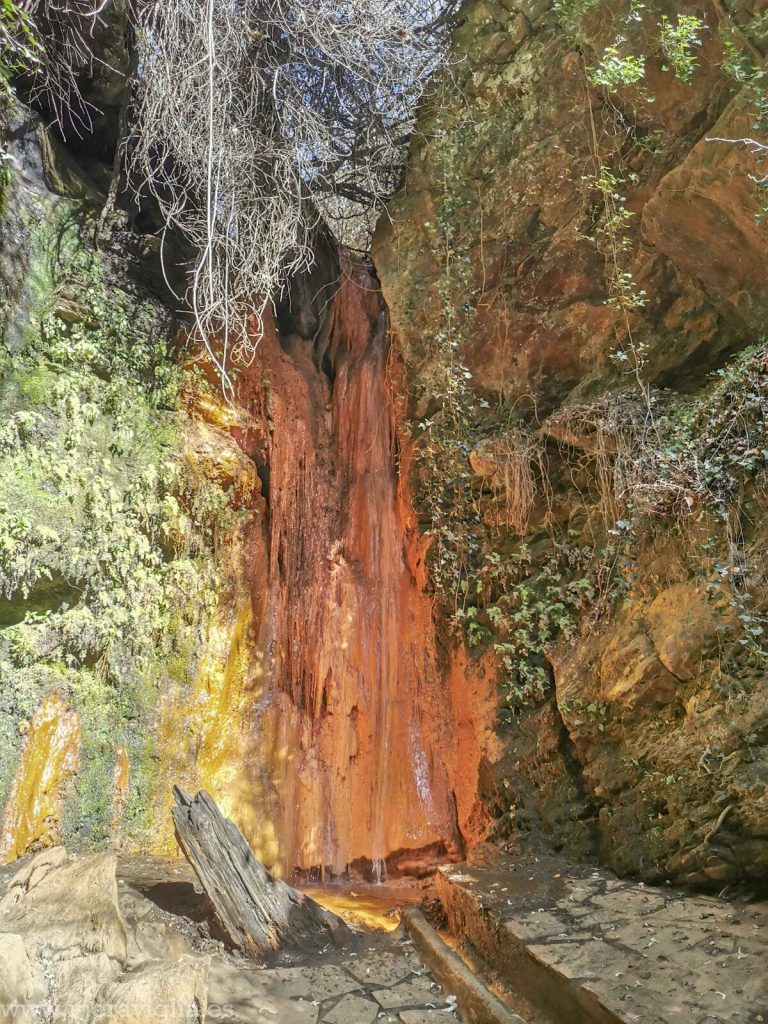
El Chorrerón, Pitres
I know I’ve just mentioned El Chorreró, but this is a different place from the other one. In this case, it is a waterfall located in the municipality of Pitres.
To reach it, it is better not to use Google Maps (at list in January 2022). It is pretty easy to find it without GPS: it is located between Pitres and Pórtugos. Once you exit Pitres road to Pórtugos, and you pass the bridge that cross Bermejo river, you’ll see a house with an information panel and a space for parking. From there, you have to walk 800 m.
On the way to the waterfall, you’ll see remains of old mills. It is an encased waterfall, pretty narrow, but I think it is really beautiful. When we visited it, it had little water, but it still had some charm.
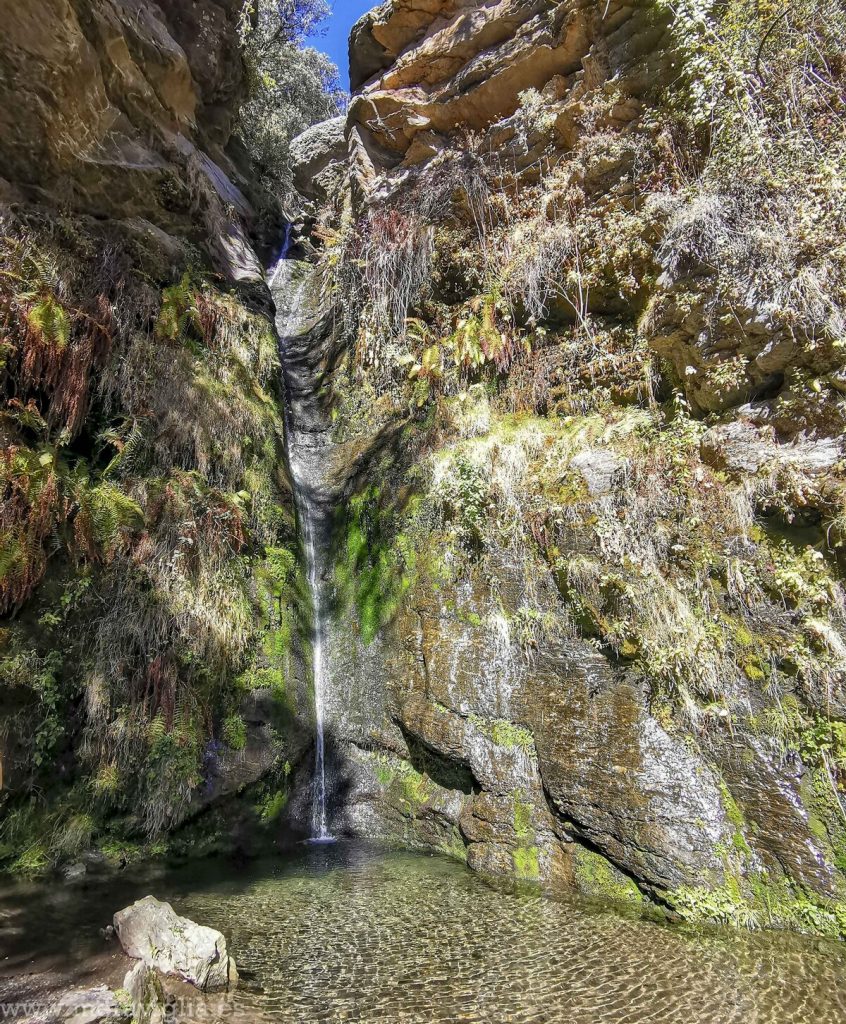
O Sel Ling Buddhist Centre
Amongst the places in Alpujarra that I walk about in this post, this may be the most popular. Nevertheless, it is a quiet place that inspires a lot of calmness. Also, it is out-of-the-way, and its access isn’t easy, which reduces the visits quite a lot.
There are two options to reach it out: walking 15 km from Casa Forestal Prado Grande (or almost 18 km from Soportújar) or drive through a pretty complicated pathway, which is what we did. The forest trail that reaches the Buddhist centre is narrow and winding. The last part is the final part, with a part pretty stony.
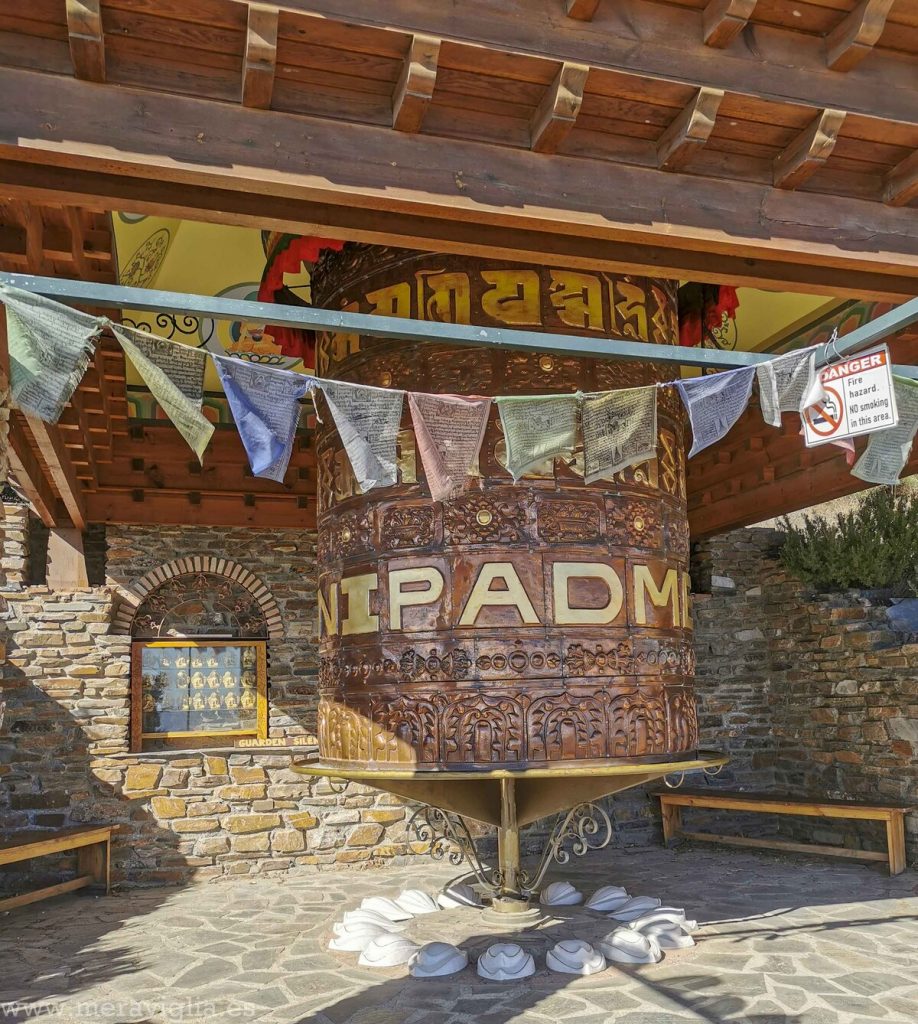
O Sel Ling Buddhist Center, 8 km from Soportújar, is a retreat zone with a private zone and another part open tu the public. It is free, you walk it on your own, and you can visit it with dogs on a lead, but it has an opening timetable. Also, you have to visit it silently, and, of course, you must respect the environment.
The walkway is outdoors, and you can see a prayer wheel, a stupa, the Medicine Buddha and the sculpture of a Green Tara. In most of these points, there are information panels with the meaning of each place and how to interact with them, so it’s a didactic visit.
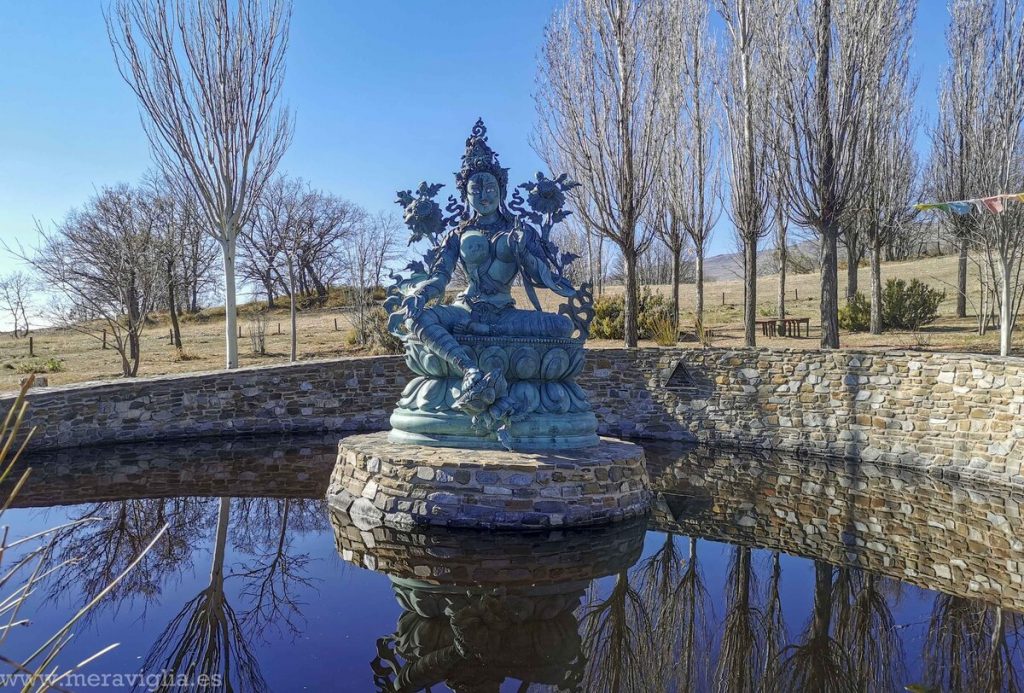
All these spots are close to each other, except for the Green Tara, for which you have to climb quite a distance. That’s why I recommend you to wear comfy shoes and water.
I hope you’ve found interesting this post about lesser known places in Alpujarra. Enjoy your visit to this unique part of Granada!
Pictures are from my travel blog in Spanish, Meraviglia, so I own the rights to them. On the other hand, links to Civitatis are affiliate, so, by using, you’ll be helping me to continue making content.
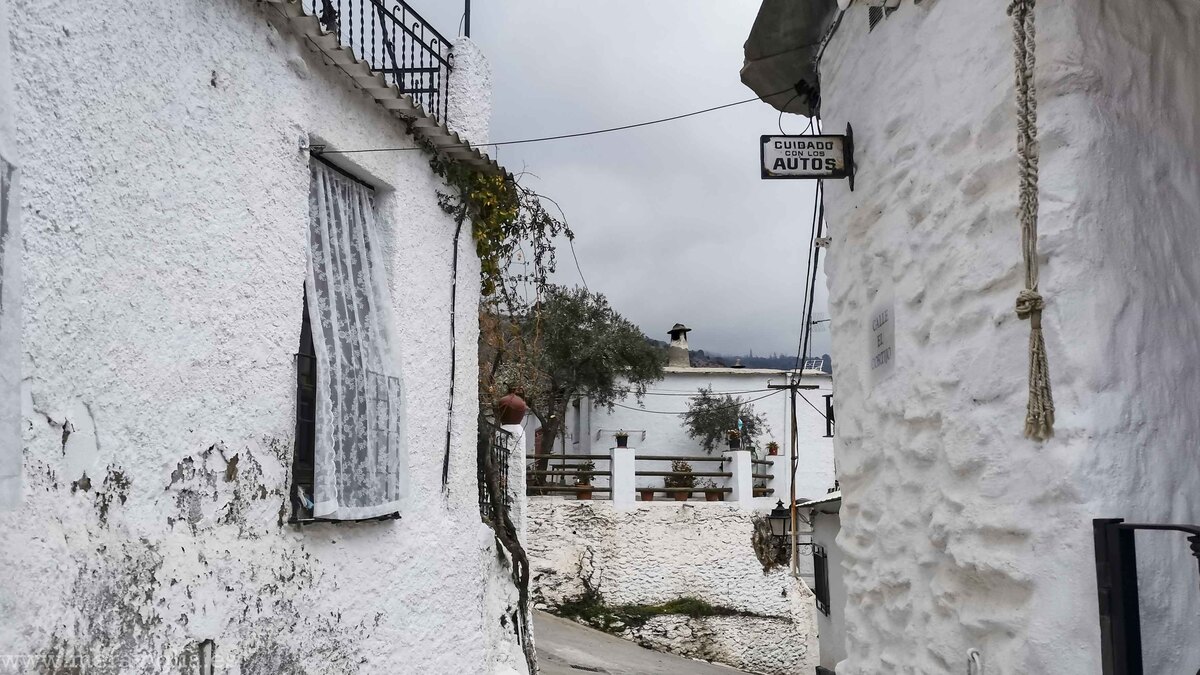
No responses yet